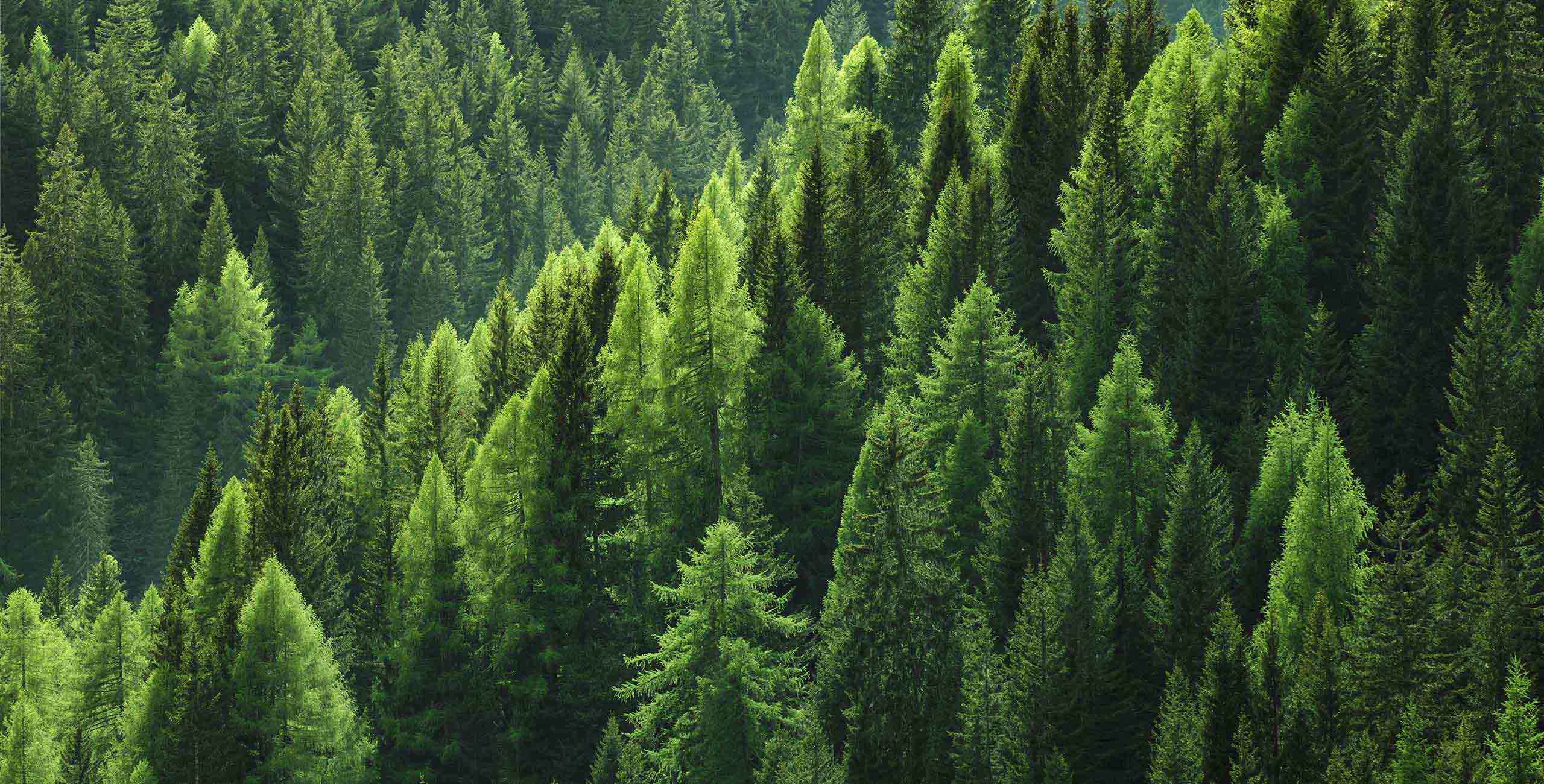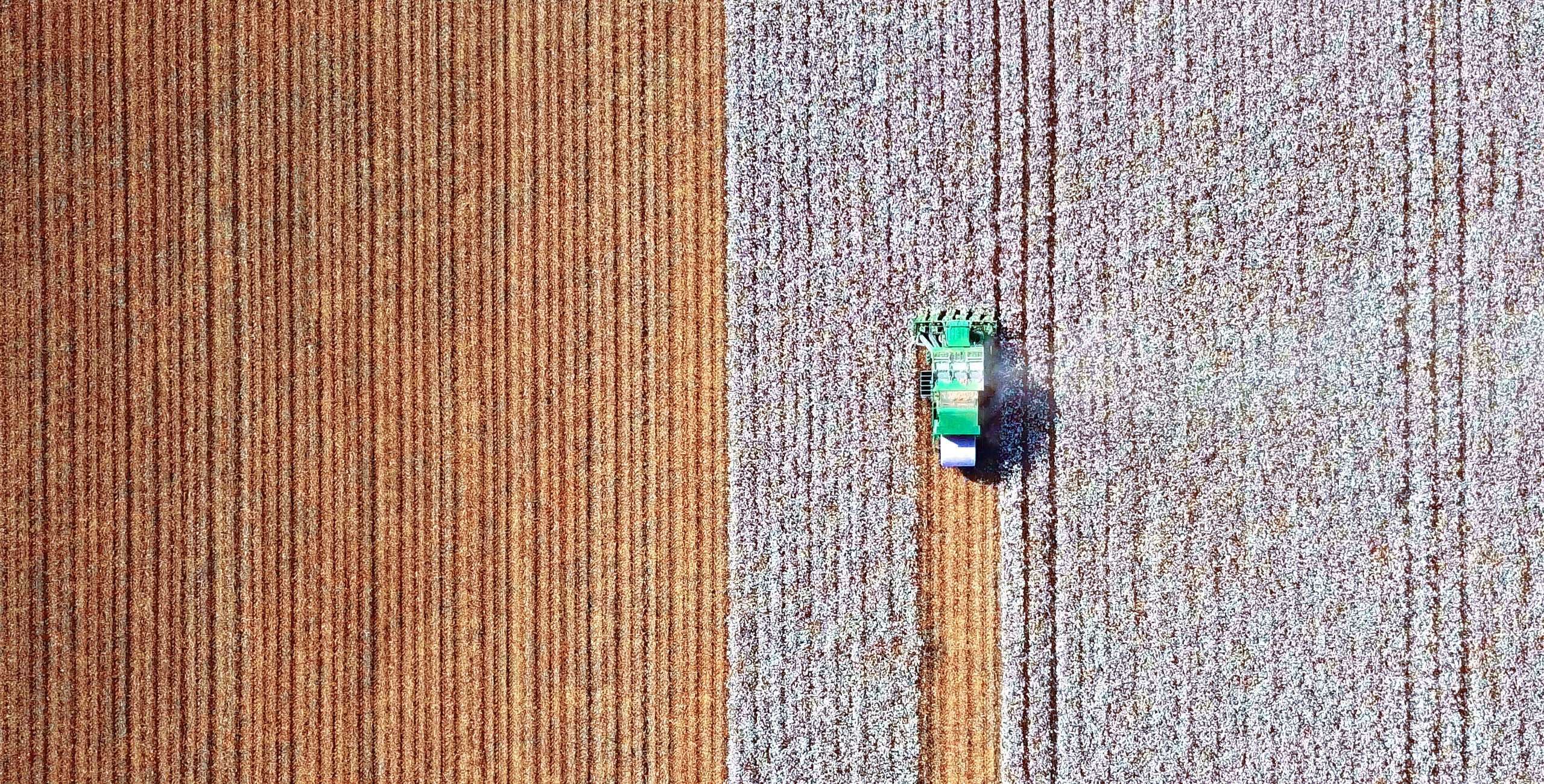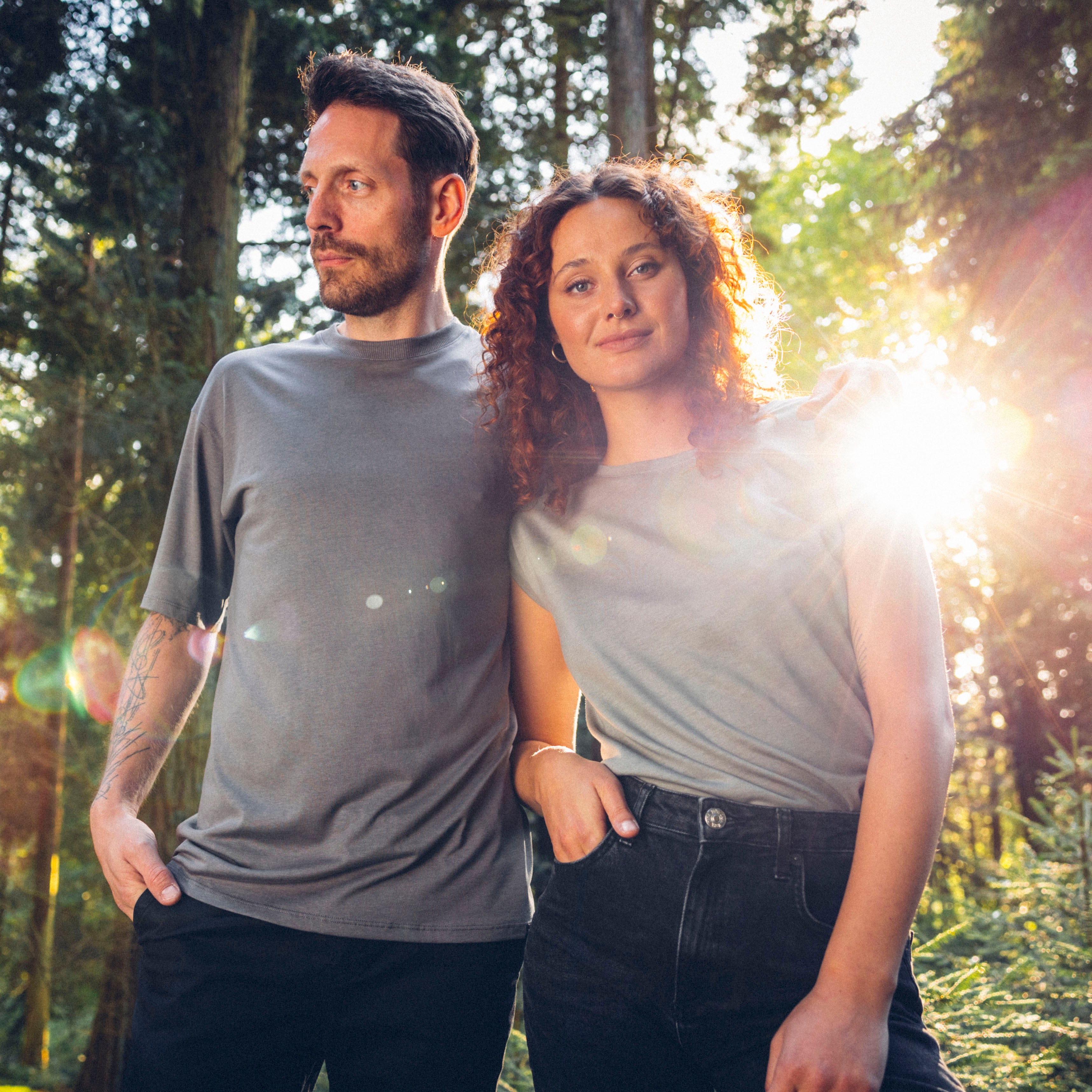Saving Water with Style? Absolutely. Did you know that just one of our T-shirts can help save up to 1,000 liters of water? Or that one kilogram of wood is enough to create four WoodShirts?
Since 2015, we’ve been crafting sustainable fashion made from wood—not only with eco-friendly processes, but also under fair conditions in Portugal, specifically in the north near Porto.
SUSTAINABLE CLOTHING MADE FROM WOOD - THE ECOLOGICAL ALTERNATIVE TO CONVENTIONAL CLOTHING
While wood-based fashion might sound unusual at first, it’s actually a highly sustainable alternative to traditional materials like cotton and polyester.
Wood is a natural, biodegradable resource—and unlike cotton, it grows locally in our climate zones. The wood we use for our garments comes exclusively from certified sustainable forestry, sourced from regions including Austria, Germany, and the Czech Republic.
WHAT DOES SUSTAINABLE FORESTRY MEAN?
Sustainable forestry is a way of managing forests that balances ecological, social, and economic needs. At its heart is the principle of natural regeneration, which ensures forests are preserved and protected for future generations.
But forests are much more than just clusters of trees, they are rich ecosystems that provide habitats for countless animal, plant, and fungi species. Their roots improve soil’s water retention and help prevent erosion, making forests vital to the health of our environment.
Forests also play a huge role in climate protection. They absorb CO₂ from the atmosphere and store it in trees and soil. In fact, it’s estimated that 49% of global CO₂ is stored in trees.
And here’s the powerful part: when wood is turned into durable products—like our WoodShirts—the CO₂ remains stored until the wood naturally decomposes. So, wood-based clothing doesn’t just replace polluting materials—it actively helps reduce greenhouse gas emissions.



That’s equivalent to more than 8 bathtubs or 20 water boxes
compared to production with cotton
used in fibre production
WHY CLOTHING MADE FROM WOOD IS MORE ECOLOGICAL THAN CLOTHING MADE FROM COTTON
Even at the planting stage, trees offer a distinct environmental advantage over conventional cotton.
In sustainable forestry, no synthetic fertilizers are needed to grow trees for fiber production, unlike cotton farming, which relies heavily on chemical fertilizers and pesticides.
One particularly harmful pesticide is Aldicarb, which contributes significantly to freshwater and soil pollution. In fact, Aldicarb alone is responsible for over 80% of the freshwater contamination caused by pesticide use on cotton fields.
And then there’s the issue of water consumption:
Cotton plantations in dry regions require intensive artificial irrigation, leading to long-lasting ecological damage.
A sobering example of this is the shrinking of the Aral Sea, once the largest inland lake in the world.
In contrast, forests don’t need artificial irrigation and they’re naturally far better at retaining water over time compared to open farmland.
Another advantage of wood as a raw material for clothing is the area it can be cultivated on. For the same amount of fiber, the area required for cotton is on average 300 to 500% larger than for fibers made from wood. In addition, no area needs to be created to cultivate forests, as is the case with monocultures such as cotton.
HOW IS ECO-FRIENDLY CLOTHING MADE FROM WOOD?
The process for producing viscose fibers could probably be described as the forefather of our fabric and was developed in the 1890s. However, the process for producing viscose has some disadvantages. Carbon disulfide is used as a solvent, which is not only harmful to the environment and health, but also very resource-intensive.
The process used to produce the fibers for our woody clothing, however, is particularly environmentally friendly when compared to other cellulose-based regenerated fibers.
In the first step, cellulose is extracted from the wood, producing the pulp needed for fiber creation. This pulp is then dissolved using N-methylmorpholine-N-oxide (NMMO), an organic and environmentally friendly solvent. The process involves removing water but avoids any chemical modification of the cellulose. Importantly, we completely avoid toxic reagents such as carbon disulfide (CS₂), which are often used in traditional fiber production. Next, the pulp is filtered and pressed through spinnerets, forming long strands of fiber. These fibers are then precipitated in a water-based NMMO bath, and bundled into fiber cables.
The best part?
The NMMO solvent can be recycled repeatedly, thanks to its excellent water-mixing properties. With a recycling rate of 99.5–99.8%, this process conserves valuable resources and keeps fiber production truly sustainable.
SAVE RESOURCES WITH ECOLOGICAL CLOTHING MADE FROM WOOD
The difference in resource consumption becomes obvious when comparing the water use of wood fibers versus cotton fibers.
To produce 1 kg of wood fiber, the process requires:
- 0.02 m³ of process water
- 0.243 m³ of cooling water
In comparison, cotton fiber production uses:
- 0.005 m³ of process water
- 0.037 m³ of cooling water
- And a massive 5.69 m³ of irrigation water
What’s more, 70% of water used for cotton comes from groundwater, and 30% from surface water. This means the total water usage for cotton fiber production is 10 to 20 times higher and 100 to 500% higher excluding cooling water, than that of our wood-based fibers. Additionally, the majority of water used during wood fiber production is for cooling and is safely returned to surface waters without contamination.
Energy & Emissions – The Climate Advantage
The energy balance of wood fiber production is just as impressive.
- Only 0.1 kg of CO₂ is released per kilogram of wood fiber
- Compared to 2 kg of CO₂ per kilogram of cotton fiber
This means a potential 20-fold reduction in CO₂ emissions when choosing wood over cotton. And even better: 86.3% of the energy used to produce wood fiber comes from non-fossil, CO₂-neutral sources, often derived from byproducts like bark and black liquor.
SUSTAINABLE & BIODEGRADABLE CLOTHING
Fibers derived from wood are highly biodegradable, just like the natural material they come from.
Unlike synthetic fabrics such as polyester, which are widely used in the fashion industry and can take centuries to break down, cellulose-based fibers like Lyocell decompose within just a few years. Even better: they leave behind no harmful residues, making them a far more environmentally friendly option for conscious fashion.
WE PLANT TREES – A PIECE OF FOREST FOR EVERY ORDER
With our project we want to do more than just produce environmentally friendly clothing. We want to show alternatives, create an understanding of the complex work steps, provide insights behind the scenes and thereby increase appreciation. Since we use a raw material from nature, we would like to give more back and stand up for nature.
That's why, since wijld was founded, we have planted a tree in Mexico for every order and supported a local reforestation project there. In 2021, we acquired our own piece of forest near Marsberg in the Sauerland and started our own reforestation project. We would like to reforest this piece of forest, which has been destroyed by climate change, together with you so that a species-rich forest can emerge.
WHAT SUSTAINABILITY MEANS TO US
With wijld we want to promote the processing of sustainable raw materials on the one hand, but on the other hand we also want to draw attention to the working conditions under which fashion is created. Unfortunately, most fashion worldwide is created under inhumane conditions. This does not just mean the sewing of clothing, but rather the entire process, starting with the raw material, such as the cotton plant.
We would like to raise awareness of how many people work together to create a piece of clothing. This background, as well as knowledge of the long production chains, makes you see clothing with different eyes. We hope that with our small project we can help to create more transparency and thus an understanding that will lead to people shopping more consciously and wearing clothes for longer.
That is exactly what sustainability means to us.












